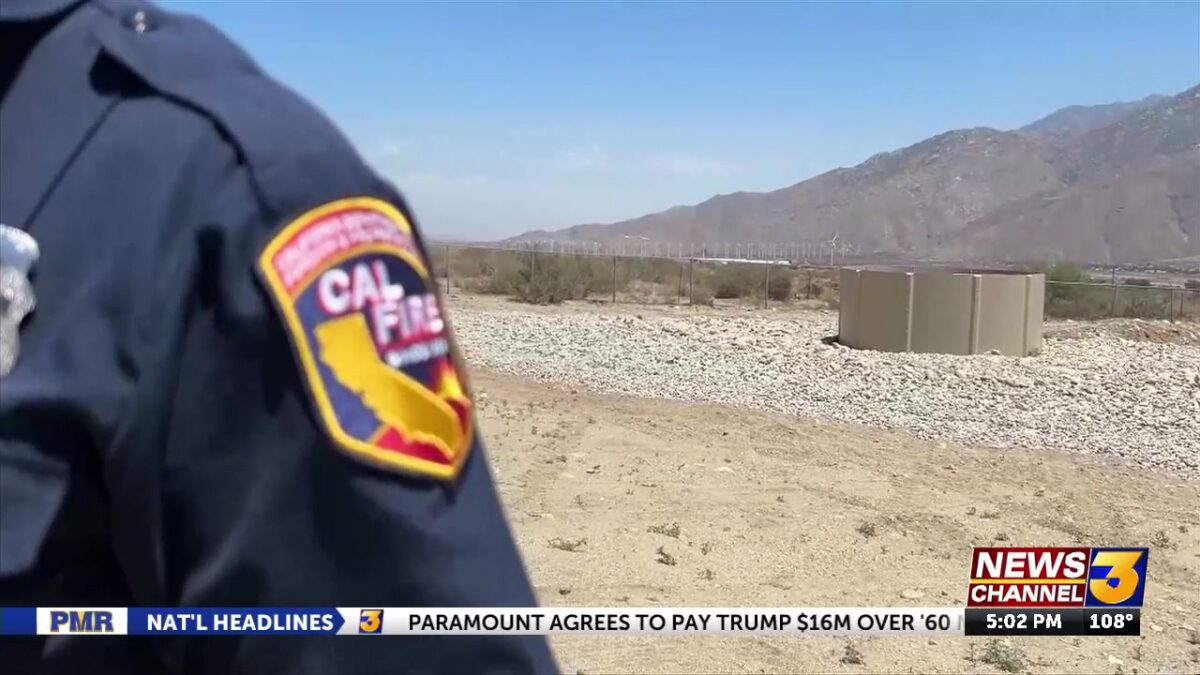New “heli-hydrant” systems aid firefighters on the Wolf Fire

Gavin Nguyen
CABAZON, Calif. (KESQ) – New technology in the Banning Pass is giving firefighters an advantage to fight wildfires in our region.
There are two heli-hydrant systems currently installed and operational in the Cabazon area on both the northern and southern sides of the I-10. The tanks were installed in mid-June.
These water tanks allow helicopters to refill within 10 seconds, cutting down the time it takes for pilots to seek other water sources, like lakes and reservoirs, or to land to refill.
Glenn Chavez, a certified installer of the heli-hydrant system, said providing a clean water source for helicopter pilots to draw water from is the key.
“They’re getting clean drinking water. There’s a couple of reasons. If they go to a golf course, those are shallow ponds. They’re picking up muck and there’s only so much water they can have there. It also clogs up their system in order to dump,” Chavez said.
Here’s how it works:
A helicopter pilot approaches the heli-hydrant, and with a push of a button, the tank begins to fill with water – up to 8,500 gallons. It can refill from empty in under seven minutes.
The helicopter pilot hovers over the tank and draws water.
Depending on the fuel load the helicopter is carrying, the pilot draws water to fill its water tank. Typically, that’s 1,200 or so gallons of water.
The pilot takes off, and the system is ready for the next helicopter to use.
Any helicopter with a “snorkel” device – used to draw water – is able to use the heli-hydrant. Nearly every firefighting helicopter you see is equipped with these snorkels.
No personnel is required to operate the system from the ground. Everything can be controlled by the helicopter pilots.

The new technology was unveiled just a couple of weeks before the Wolf Fire started, and was used heavily as firefighters performed aggressive air attacks to contain the fire.
Tawny Castro, a Senior Public Information Officer with CAL FIRE/Riverside County Fire Department said, “It’s a lot of things falling into place at the right time.”
According to local water officials, these two heli-hydrants won’t be the only ones to be built in Riverside County. There are plans for additional ones to be deployed in Poppet Flats, Cherry Valley, and Beaumont, for a total of six that are confirmed. They also said there are plans for a seventh to be secured.
Each system costs roughly $300,000 to be installed, according to Larry Smith, Director of the San Gorgonio Pass Water Authority.
“Here in Riverside County, we decided to go all in. We’re going to go big and go six, hopefully seven. But yes, we should be proud of ourselves here in Riverside County. We are really leading the way,” Smith beamed.
Michael Pollack, the General Manager of the Cabazon Water District, also offered a fun fact about the two operational heli-hydrants in Cabazon right now. On the southern side of the I-10 lies the “Jenson Creek” heli-hydrant; on the northern side, a hydrant named “Littlefoot.”
The reason: “Cabazon is famous for dinosaurs. And the girls in the office, they named it after the baby long-necked dinosaur,” Pollack added with a laugh.